Whether you want to get into bike commuting or you want to pick up cycling as a hobby, you’re making progress toward a healthier lifestyle. You may have ridden a bike as a child and you’re about to purchase a new one now as an adult, and may be wondering what the differences are between different bicycle types.
Do all bikes have gears?
Most modern bicycles have gears, although not all of them do. The number of gears varies from bike to bike. Fixies, single-speed bikes and some folding bikes come without gears.
Let’s understand why some bikes have gears while others don’t, how gears make a difference, how to decide which one you need and how many gears you need for your next bike.
Electric bikes built for everything and priced for everyone. Shop Rad Power Bikes, America's #1 electric bike brand. Get out. Go further. Ride Rad.
Why do bicycles have gears?
Bicycles have gears because they allow you to change the power your legs generate into more torque or into more speed. When you accelerate or climb a hill you need more torque while when you cruise or go down a hill you need more speed.
Gears make a difference because they allow you to change the speed and the torque you get in return for the effort you put into pedaling.
In low gears, you get less speed but more torque, which is good for climbing hills.
In high gears you get more speed but less torque, which is good for cruising on a flat piece of road or going downhill.
Different bikes have a different number of gears and different gear ranges. Let’s see a few popular bike types and their gear ranges:

- Mountain bikes are primarily suited for climbing hills, and they fall behind on speed
- Road bikes are best for high speeds, but it’s quite difficult to climb steep hills with them
- Hybrid, trekking, cyclocross and gravel bikes have a mid-range gearing, which makes them versatile for climbing as well as moderately high speeds.
- City bikes and folding bikes with gears have a very narrow gear range, and they are best suited for moderate speeds and moderate hills.
- Fixies and single speed bikes have a fixed gear ratio, and they are best for mostly flat roads.
Why are there bikes without gears?
While having gears is an advantage when the terrain changes and pedaling becomes harder, not having gears is an advantage when it comes to bike weight and maintenance.
The gearing system on a bike can add a few lbs of weight to your bike. Having a lighter bike means less work for you as you pedal, but more importantly less effort if you have to lift up your bike.
No gears also means less maintenance and there are less things that can break. Replacing broken cassette, shifters and derailleurs on a bike with gears can be quite costly. Fixies and single speed bikes don’t have this problem.
Not having gears is also less confusing. There is less to worry about and to pay attention to.

Gears are not important for every rider, especially for those who ride on flat roads. I have found that despite having a wide gear range on my bike, 80-90% of the time I ride in the same gear, which is similar to riding a single speed bike.
Fixies and single speed bikes represent a classical form of riding bikes and they live their new era of renaissance nowadays.
Gears or no gears: which is better?
One form of riding is not superior to the other, but it really depends on your circumstances and personal preference.
Having gears is better if your terrain changes and you are not reasonably fit. It’s also better if you want to maximize your speed. Most people fall into this category, so for most people having a bike with gears makes more sense.
Not having gears is better if you want to own a bike that has very hassle-free maintenance requirements and few things that can go wrong with it. If you ride mostly on flat and you’re reasonably fit, not having gears is not a big problem.
Riding a bike without gears becomes difficult in the following scenarios:
- On climbs you have to pedal harder and on particularly steep hills you may not have enough muscle power to keep you going.
- In order to accelerate on descents you may need to turn the pedals at such a high revolution that you may not be able to keep up with your bike’s speed.
- If you ever want to carry heavy cargo or pull a trailer, not having low gears makes it very difficult to accelerate and nearly impossible to go up even moderate hills.
How to go faster and climb hills with only one gear?
If your bike has only one gear, you can only rely on your muscles for speed and climbing.
The only way you can go faster with a single-speed or a fixie bike is by pedaling faster. When you reach the fastest cadence your legs are capable of, you have reached your maximum speed. (If you ride a bike with gears, you can switch into a higher gear, which allows you to travel faster at the same cadence).
Climbing is also done with muscle power alone, and steep hills are particularly difficult to climb on these bikes. There are two tips to make hills more bearable:
- It’s recommended to have the saddle height properly adjusted in order to spare your knees from difficult grinds as having the saddle too low can lead to knee pain.
- Generate more power by stepping out of the saddle and gently rock your bike left and right as you pedal. This way you can recruit more muscle groups such as arms and core as well.
How many gears do you need?
If you’re new to riding and unless you specifically want a bike without gears for some reason, you should probably opt for a bike with gears. It opens up a lot more options in terms of where you can go and how fast you can ride.
Whether your bike has 7, 8 or 9 gears doesn’t really matter. For the most part, the difference is how big of a jump there is between one gear and the next.
Some people new to cycling believe that the number of gears determines how good a bicycle is and that a 9 speed bike is better and faster than a 7 speed bike.
Here’s a good video that explains how gears work on a bicycle. It focuses on road bikes, but all bikes with gears operate based on the same principles.
Unless you want to get into racing (which you probably don’t), pay attention first and foremost to the type of bike you get. This should depend on your fitness, riding style and the type of roads you will be riding on. I wrote a cool detailed comparison about 12 different bike types for commuting, which you can find here.
How can you tell if a bike has gears?
All bicycles that have gears also have shifters. These are located either on the handlebar or on the down tube of the bike frame.
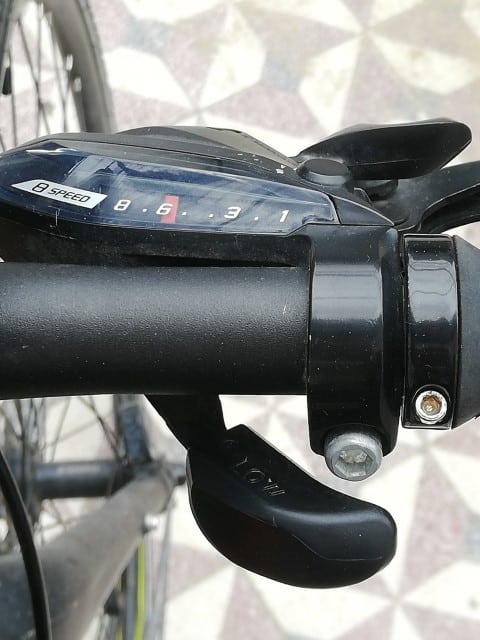
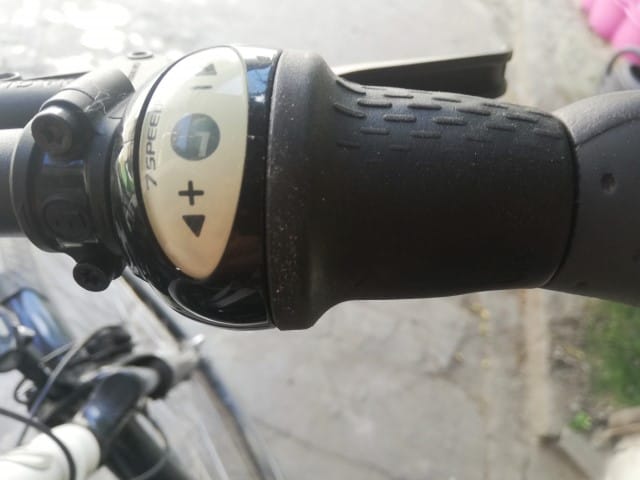

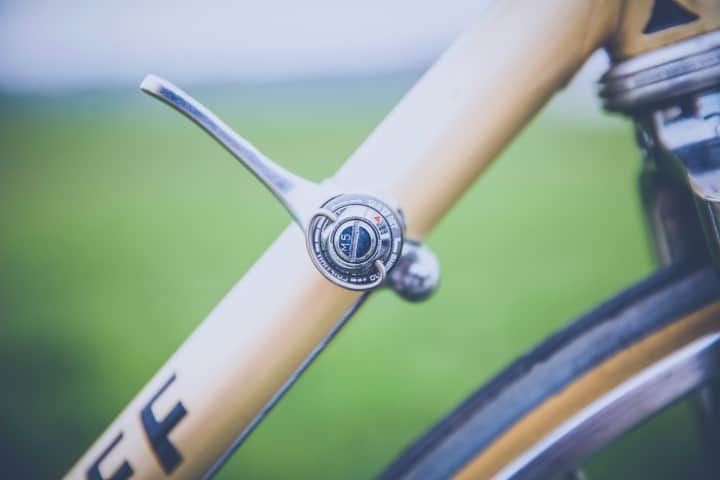
You can also recognize a bike with gears by looking at the hub of the rear wheel. If you see several sprockets attached to the hub, you know that it’s a bike with gears. By counting the sprockets you can also determine how many gears the bike has. This number corresponds to the numbers found on the shifters, which are located on the handlebar.
Some bicycles have gears despite having only one sprocket on the rear hub. These are called internal gear hubs. At first they may be confused for single speed bikes, but a closer inspection reveals a cable running into the hub. All the complex gearing, which is located on most bikes with several sprockets, is located inside the hub. To the untrained observer the giveaway detail is the cable and the shifter.
If a bike has only one sprocket and no internal gear hub, then it has only one gear.
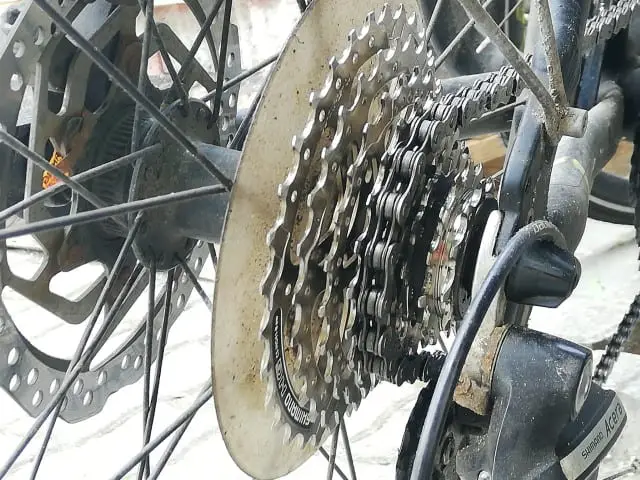
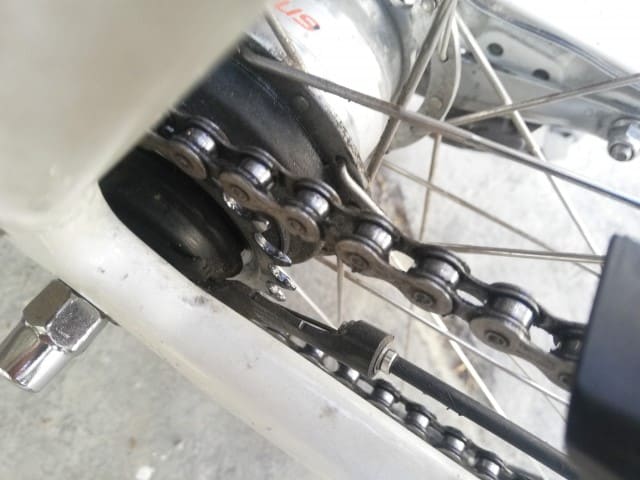
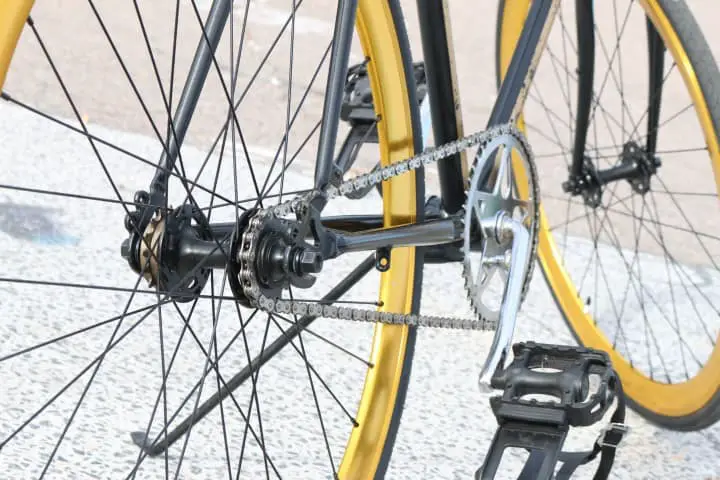
How to know what gear to use on a bike?
When you sit on a bike with gears, use the shifters to select a gear that you feel comfortable riding in. On a flat piece of road at a moderate pace this is usually somewhere in the mid-high range for most people. Probably you will find yourself using the same gear most of the time.
I dedicated another article entirely to the basics of shifting gears on a bicycle. If you’re new to cycling and you find gears confusing, I think you will love it. Check it out here.
Conclusion
We have learned that not all bikes have gears, although most of them do. If you’re a beginner and you’re about to make a purchase, I recommend opting for a bike with gears. Once you get good at riding, you may decide to upgrade or downgrade, but gears keep your options open.
Happy Pedaling!
